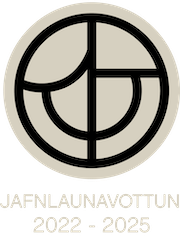Frá áberandi markaðssetningu (e. conspicuous marketing) til eflingar umhverfishyggju: Hvernig geta ástæður félagslegrar stöðu knúið fram val á umhverfismerktum fiski? - verkefni lokið
Fréttatilkynning verkefnisstjóra
Með hliðsjón af tryggingatilgátunni (Nettle o.fl., 2017) var kannað hvernig vísbendingar um matvælaskort hafa áhrif á matvælaval neytenda, með hugsanlegum afleiðingum fyrir lýðheilsu, sjálfbærni og markaðshætti.
Niðurstöður úr vinnupakka 1 (WP1) sýna að fjarlægar vísbendingar um matvælaskort, eins og vísbendingar um loftslagsbreytingar, leiða til meiri vals fyrir matvæli sem teljast kaloríuríkari (samanborið við lægri í kaloríum). WP2 framlengir þessar niðurstöður með því að sýna að aðrar vísbendingar um fæðuskort, þar á meðal lúmskar vísbendingar eins og vísbendingar um veturinn, leiða til svipaðra niðurstaðna og kalla fram hugsanir sem tengjast orkuþéttum mat og lifun. WP3 leggur til sálfræðilegt kerfi, Anticipated Food Scarcity (AFS), sem gæti skýrt þessar niðurstöður að hluta, og lýkur með því að þróa sálfræðilegan kvarða til að mæla þessa byggingu. Þannig býður WP3 upp á annað tæki en núverandi mælikvarða til að skoða fæðuóöryggi fólks með þverfaglegri linsu. Að lokum sýnir viðbótarritið fram á hvernig þróunarlega gamaldags ákvarðanatökuaðferðir sem hafa þróast í gegnum tíðina til að takast á við tíðan matarskort eru nú nýttar af mörgum markaðsaðferðum, sem geta hugsanlega stuðlað að skaðlegum lýðheilsuafleiðingum.
English:
Drawing from the insurance hypothesis (Nettle et al., 2017), this project examined how cues to food scarcity influence consumer food preferences, with potential implications for public health, sustainability, and marketing practices. Results from Work Package 1 (WP1) show that temporally and spatially distant cues to food scarcity, such as climate change cues, lead to a higher preference for foods that are considered higher in calories (compared to lower in calories). WP2 extends these results by showing that other cues to food scarcity, including subtle cues such as cues to winter, lead to similar outcomes and trigger thoughts associated with energy-dense foods and survival. WP3 proposes a psychological mechanism, Anticipated Food Scarcity (AFS), that may partially explain these outcomes, and concludes by developing a psychometric scale to measure this construct. Thus, WP3 provides an alternative instrument to existing scales to examine food insecurity in people through a multidisciplinary lens. Finally, the additional publication demonstrates how evolutionarily outdated decision-making mechanisms that have evolved over the eons to address frequent food shortages are now being exploited by many marketing practices, potentially contributing to harmful public health consequences.
Information on how the results will be applied
The results of this research can be applied in practice in the academic world. In terms of academic applicability of the findings, an important contribution of this research is the newly developed and validated psychological construct: Anticipated Food Scarcity (AFS) and the psychometric scale that captures this construct. AFS can promote new approaches to studying the impact of food scarcity cues, such as the COVID-19 and its associated inefficiencies in the food supply chain, on food preferences. For example, the construct can expand understanding of phenomena such as food hoarding, impulsive purchases, and preferences for hedonistic versus utilitarian foods with their implications for public health and sustainability. Moreover, as the research presented in WP3 shows, AFS is a predictor of support for Universal Basic Income; therefore, the AFS scale can be used to study important social dilemmas. In terms of the applicability of the results in practice, the empirical package presented here encourages debate on how climate change, trade wars, and other such phenomena should be communicated to societies. If the results of WP1 and WP2 can be applied to actual food choices, it is possible that policymakers may prefer to avoid mentioning potential food supply problems when informing the public about such events. Finally, grocers may need to modify their marketing campaigns to minimize the impact of food scarcity cues, including these subtle cues. For example, retailers might consider asking for donations to charities that help people in poverty after shopping rather than before shopping because consumers could be particularly likely to reach for unhealthy, high-energy foods in the latter case.
A list of the project's outputs
1. Four academic papers published in Food Quality and Preference (2), Appetite, and Evolutionary Behavioral Sciences.
2. All materials, data, and analysis code publicly available through Open Science Frameworks.
3. All preprints publicly available through the PsyArXiv repository.
4. Research disseminated to nine experts working closely with their clients, and highlighted in a form of an article in the Daily Mail Online, which is one of the leading news publishers in the United Kingdom.
5. Established collaboration between Reykjavik University, Singapore Management University, SWPS University of Social Sciences and Humanities, University of Agder, and Aarhus University.
Heiti verkefnis: Frá áberandi markaðssetningu (e. conspicuous marketing) til
eflingar á umhverfishyggju: Hvernig geta ástæður félagslegrar stöðu knúið fram
val á umhverfismerktum fiski? / From conspicuous marketing to promoting environmentalism: How can
social status motives drive eco-labeled fish choices?
Verkefnisstjóri: Michal Krzysztof Folwarczny, Háskólanum í Reykjavík
Tegund styrks: Doktorsnemastyrkur
Styrktímabil: 2020-2021
Fjárhæð styrks: 13,25 millj. kr. alls
Tilvísunarnúmer Rannís: 206880


